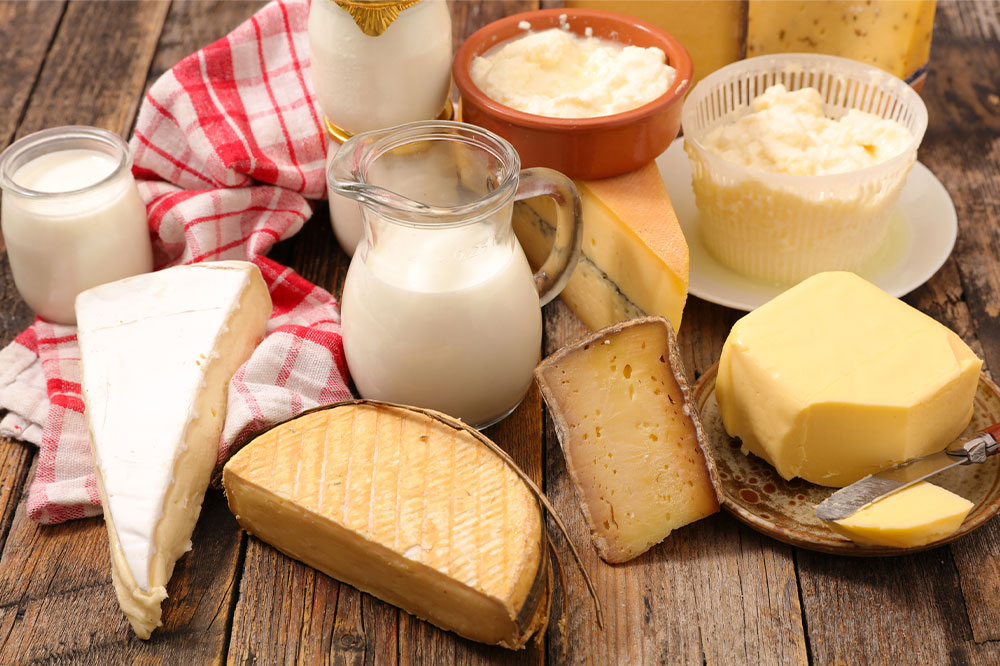5 Alarming Foods to Avoid For Healthy Skin

From beauty influencers to basic enthusiasts, having clear and healthy skin is a source of envy. But everything we see online about how nutrition can impact our skin’s overall health and appearance may not be accurate. Despite any debates, knowing some of the most surprisingly common foods can trigger acne or inflammation is good. Herein, we discuss five such foods that can have quite a few alarming effects on skin health:
Dairy Products
Milk is one of your skin barrier’s biggest—and often unrecognized—offenders to be aware of. Most dairy products contain hormones like testosterone in high quantities, promoting oil production and clogged pores. Common products like milk, butter, ice cream, cheese, yogurt, and cream are used independently and as ingredients in various dishes. Avoiding these foods will keep excess oil from being produced on the skin.
While studies did show associations between dairy and acne, they don’t conclusively prove that dairy causes acne. Although no formal link has been established between dairy and acne, many dermatologists reported patients’ skin getting better when they stopped dairy. To substitute milk and milk products in your nutritional regime, consider opting for non-dairy alternatives that allow the same use as milk products but without wreaking havoc on your skin. Since dairy is also an important source of calcium, try to add calcium-rich leafy greens like kale and mustard greens, broccoli, and sardines to your food to maintain a healthy balance of minerals in your body.
Highly Glycemic Foods
Food’s glycemic index measures its ability to increase blood sugar, which governs insulin production quickly. Refined carbohydrates like white rice, white flour, bread, sugar, and other similar foods can spike insulin levels quickly, creating conditions that increase acne. With the increase in insulin levels, the body’s levels of androgen hormones and IGF-1 also rise. This increase in levels makes the skin cells grow faster and increases sebum production, which can cause acne.
Inculcating healthy daily habits can significantly help control acne. Many medical practitioners suggest replacing white flour with more complex carbohydrates like whole wheat flour. Replace processed white sugar with sweets like honey or agave, which have lower glycemic index values than sugar. Instead of fruit juices and sugary fruit drinks, consider grabbing a piece of fresh fruit for wholesome nutrition, rich in vitamins and minerals. Another healthy swap is having regular or sparkling mineral water instead of soft drinks loaded with sugar. Instead of eating processed snacks, try snacking on vegetables, as they are known for their low glycemic index values.
Fatty Foods
Fried (and processed) foods often contain cytokines, which can be inflammatory and make the skin red and itchy, which can breed the development of acne. Red meat, cheese, butter, and hydrogenated oils are rich in saturated fats and associated with high insulin growth concentrations . These foods can trigger the onset of acne or make existing conditions worse. Foods rich in Omega-6 fats have also been linked to increased levels of inflammation and acne. These include oils like sunflower, safflower, and soybean, which are common at most fast food restaurants.
You can replace fatty foods with a few healthy alternatives. Consider supplementing these foods with omega-3 fatty acids, which can reduce levels of inflammation and help with acne severity. Indulge in colorful plant-based foods that are rich in antioxidants. Moreover, high-fiber foods help reduce blood insulin concentrations.
Coffee
Starting the day without a cup of coffee is virtually impossible for most of us. But coffee increases the production of the stress hormone cortisol in our body. High cortisol levels trigger a fight-or-flight response in the body, leading to high blood pressure, high glucose levels, and so on. High-stress levels have been linked to the increased production of hormones called androgens, which stimulate oil glands and hair follicles, thus affecting sebum production and acne levels. Additionally, coffee is a natural diuretic, implying that it causes dehydration, which slows down the skin’s healing process. Adding sugar and dairy to your coffee can further worsen these conditions and promote acne.
Whey Protein Powder
Whey is a go-to supplement for food building, and its protein powder can increase the concentration of amino acids, leucine, and glutamine in our bodies, promoting acne growth. Too much of this food product can also increase the insulin-like growth factor (IGF-1) level in the body, which is linked to testosterone production causing acne breakouts. Studies have reported direct links between the consumption of whey protein and acne and the correlation between the severity and duration of acne breakouts amongst those using whey protein supplements.
Apart from foods, various skin habits can trigger acne. Prioritizing healthy habits to maintain the delicate balance of our skin barriers is a crucial step you cannot miss. A sunscreen with SPF 30/50 is a must when stepping out in the sun to avoid exposure to UV light. Covering the face and eyes when stepping out is recommended to add a layer of protection for the skin. Using a good moisturizer based on your skin’s needs is also important. Visit your dermatologist or skin doctor to find products and build a routine that works well for your skin. Additionally, remember to wipe off any make-up before heading to bed, as it can clog pores, irritate the skin, and lead to acne. With minor enhancements to your skincare routine and nutrition regimen to support your immune system and boost overall health, controlling acne breakouts and inflammation is possible.






